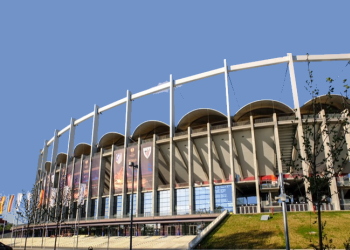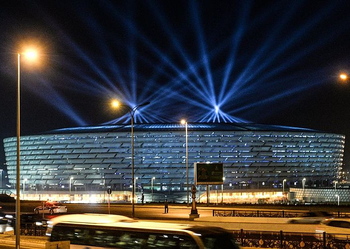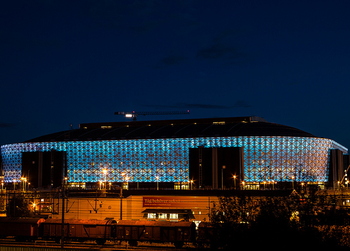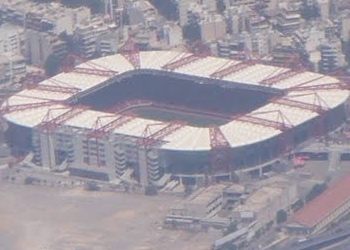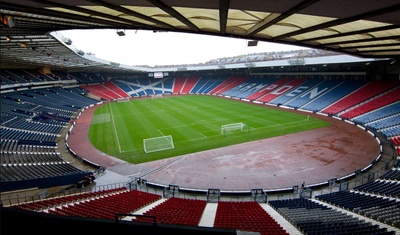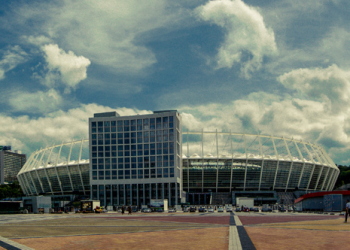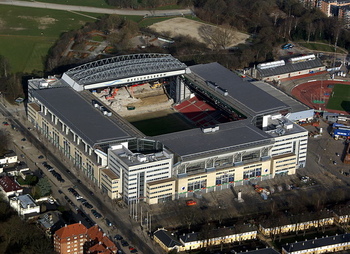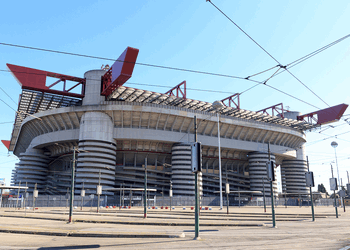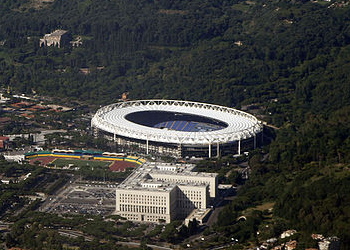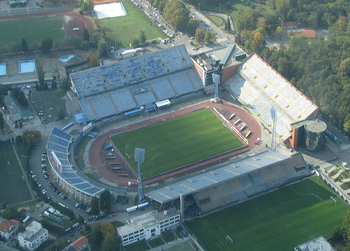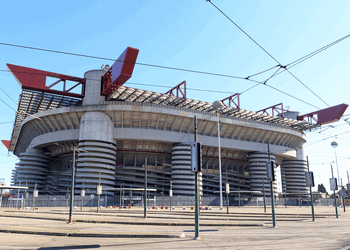
There are countless cities around the world that accommodate more than one football club within their boundaries.
Head to the city of Liverpool, for example, and you’ll find yourself in the most successful city in England, with Liverpool Football Club and Everton having won 27 top-flight titles between them. Yet the chances of landing within a city that sees two of those clubs sharing a ground are surprisingly thin, all things considered.
So why do some clubs end up sharing a stadium? Is it always league clubs that share ground, or are some international clubs involved in it too? What are the best examples of shared stadiums? Perhaps most importantly of all, what does the future hold when it comes to different football clubs sharing a stadium?
Here we’ll try to answer some, if not all, of those questions and give you an idea of which cities to visit if you’re hoping to kill two birds with one stone when it comes to seeing the homes of the best clubs in the game.
Football Stadiums With More Than One Club
What Is Stadium Sharing?
 Let’s start with a nice and simple one: What exactly is meant by ground sharing? Simply put, any two sports teams that use the same stadium as each other can be said to be sharing the same ground.
Let’s start with a nice and simple one: What exactly is meant by ground sharing? Simply put, any two sports teams that use the same stadium as each other can be said to be sharing the same ground.
Where things become a little bit more interesting – and confusing – is when you start to look at what sport the two teams are involved with that are sharing a ground. It is not uncommon, for example, for a rugby team and a football team to use the same stadium as each, with the pitch having to be altered from one match to the next depending on the season.
Obviously we’re only really interested in football, so we’ll steer clear of talking about inter-sport sharing of stadia. Instead we’ll have a look at intra-sport sharing, where teams that at least compete in the same sport as each other tend to share facilities. Sometimes the teams will be in completely different leagues from each other, whilst on other occasions they’ll actually be in the same league the majority of the time.
The good news for the Football Association is that this doesn’t actually complicate things all that much. Most of the time, because of things like police resources, traffic congestion and so on, the fixture schedulers try hard to ensure that two teams from the same city play their home games on alternate weeks. Returning to our previous example, Liverpool might play at Anfield one Saturday whilst Everton have an away game, then Everton will be at Goodison Park the following week and Liverpool will be on the road. If clubs share a stadium then the fixture schedulers don’t need to make all that much of an adjustment to ensure that there aren’t massive fixture pile-ups.
Famous Football Ground Shares
San Siro
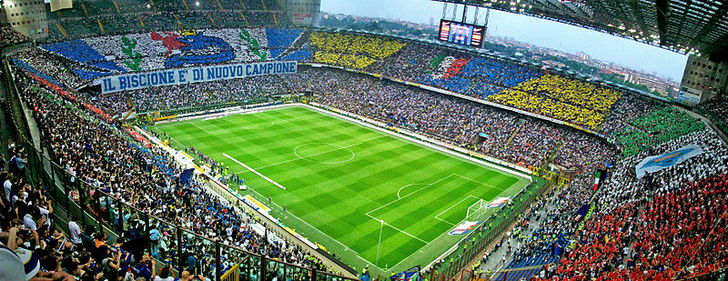
The Stadio Giuseppe Meazza is better known around the world as the San Siro and is arguably one of the most famous of all the shared stadiums. When it first opened in 1926 it was exclusively for the use of AC Milan as Internazionale played their home games at the Arena Civica. They became joint tenants of the property in 1947 and have remained there ever since. Plenty of stadia in Italy are designed to be multi-purpose venues, so the San Siro stands out because it was specifically built with football as a spectator sport in mind.
Stadio Olimpico
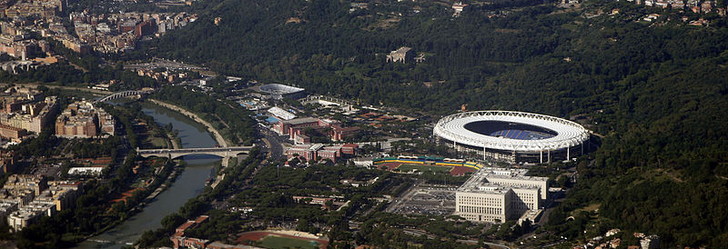
The largest sports facility in all of Rome, the Stadio Olimpico is home to both SS Lazio and AS Roma. Interestingly it is also used as the main venue for the Italian national football team and the nation’s rugby team. It is held in such regard as a stadium that it’s also where the Coppa Italia final is held every year. Early in 2017 it was confirmed that Roma would be building themselves a new stadium, away from their fierce rivals. No sooner was that decision confirmed and Lazio announced that they wanted their own home, too. Within the next five years it’s entirely possible that the Stadio Olimpico will go from housing four sides to simply being Italy’s national stadium.
Stadio Comunale Luigi Ferraris
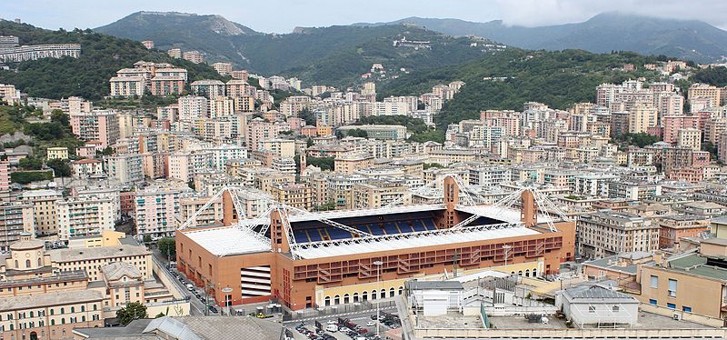
In England there are no top-flight clubs that share a stadium. In Italy, it is a far more common practice. We won’t list all of the stadia that house more than one team, so we’ll finish telling you about the home of both Genoa and Sampdoria. Built and originally used solely by Genoa, it wasn’t until 1946 that another club came along to use the facilities. Sampdoria was actually formed by the merging of two of the city’s biggest teams, so when this new club was created it was natural that they’d need a larger home than either of the clubs on their own could offer. They demanded to use The Stadio Luigi Ferraris and an agreement for them to do just that was swiftly reached.
Allianz Arena

Bayern Munich might be the most famous club and successful club from that particular German city, but they weren’t the first. Formed in 1860, as their name suggests, TSV 1860 Munich played their games at Sechzgerstadion from 1911. Bayern Munich, formed in 1900, used to play games at the home of Münchner Sport-Club until they became too popular. At that point the moved into Sechzgerstadion with TSV 1860 and the two clubs have shared a home ever since. In 1972 they moved to the Olympiastadion and they switched to their current home of the Allianz Arena when it opened in 2005. The relationship between the two clubs has always been cordial, as proven in 2006 when 1860 faced financial trouble and Bayern bought their 50% share in the Allianz Arena. The Germany national team also play their games here.
Hampden Park

Perhaps one of the most amusing ground shares in international football comes from North of the border in the UK. Hampden Park is the national stadium for the Scottish football team and has been since 1906. Yet it wasn’t the Scottish national team that the stadium was built for. Instead Queens Park, which is the oldest football club in Scotland, began building the ground in 1899. It took four years for the work to be completed, at which point they moved into the largest stadium in the world at the time. Despite being the Scottish Professional Football League’s only remaining amateur club and commanding an average crowd of about 750, Queens Park have called Hampden Park their home since 1903.
Former Shared Grounds
The above are some of the most famous examples of grounds that are shared in modern day football, but what of stadia that were shared in years gone by?
Here’s a little look at some interesting and unexpected times when clubs shared their home:
Maine Road
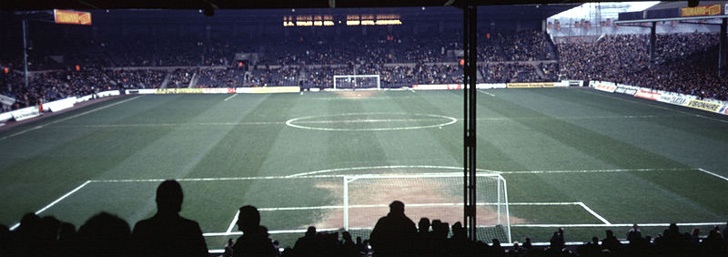
Nowadays Manchester United and Manchester City are bitter enemies, but that wasn’t always the case. In the wake of the Second World War Manchester United had nowhere to play, owing to bomb damage suffered by Old Trafford during the Blitz. From 1945 until 1949 the Red Devils paid their neighbours £5000 per season as well as giving them a cut of the gate fees in order to be able to play their matches at Maine Road. It was during this period that the stadium’s attendance record was set when 83,260 people turned up to see United take on Arsenal. That remains a record attendance for a league game in England.
Selhurst Park

Whether you think the folk at Crystal Palace have a generous disposition or like to find income from alternative sources is entirely up to you, but one thing that can’t be denied is that the club have not messed about when it comes to other teams using their ground. In 1985 Charlton Athletic moved into the stadium as temporary tenants but remained there until 1991. Charlton Athletic and Palace were the first teams in England to share a ground in such a fashion. When the Addicks moved out at the start of the 1990s the Eagles must have felt lonely, so Wimbledon moved in instead. They remained there for twelve years until they were given permission by the FA to move cities in 2002, re-locating to Milton Keynes to become the MK Dons.
Stadio delle Alpi / Stadio Olimpico Grande Torino

Two different stadiums, yes, but with a similar tale to tell. When the Stadio Olimpico Grande Torino opened in 1933 it immediately became the home of Juventus, a side that had previously bounced from one venue to another in Turin since their formation in 1897. Another football club was formed in Turin in 1906 by the name of Torino and they also failed to settle in a ground for a few years until they moved in with Juve in 1958. Both clubs stayed in the stadium until 1990 when they switched to the Stadio delle Alpi when it opened as a ground to host the FIFA World Cup of that year. In 2006 it closed down so they both returned to the Olimpico, with Juventus leaving in 2011 and Torino calling it home to this day.
The Future of Ground Shares

Football is, in many ways, a strange old game. Despite the rampant hooliganism of the 1970s and 1980s, rival clubs were far more likely to entertain the idea of sharing a stadium in the past than they would be today. As a sport football may be far more sanitised today, yet the perception is that two sets of supporters would not be able to share the same space without trouble erupting.
To return to our example from the beginning of this piece for one final time, whenever the possibility of either Liverpool or Everton leaving their current homes is brought up the immediate suggestion is for them to share a ground. Both supporters and club hierarchy have never seriously considered this as an option, however, in spite of their games against each other being known as the ‘friendly derby’. Whether reality or merely perception, the widely accepted wisdom on Merseyside is that the two sides will never share a home regardless of the difference it might make to the city’s infrastructure and their own financial situations.
With Juventus moving out of the Stadio Olimpico into their own venue back in 2011 and both Lazio and Roma requesting their own grounds early in 2017, it appears as though ground shares are also becoming a thing of the past in Italy, too. This once great tradition seems to be dying out, perhaps because of the amount of money available to clubs through the likes of television deals and ticket sales. Sharing a stadium with another club also means having to share the profits you might make on things like renting out your facilities for conferences, weddings and so on. Greed is killing the willingness of clubs to work together.
In May of 2016 Tottenham Hotspur confirmed that they had reached an agreement to play their Champions League fixtures for the 2016-2017 season at Wembley Stadium, the home of the England national squad. With White Hart Lane due to be demolished and a new stadium built in time for the 2018-2019 season, the club will also use England’s home ground for their games in the 2017-2018 season. This temporary measure can hardly be seen as ground sharing in the sense we’ve discussed it here, but clubs temporarily using the stadiums of other teams whilst they renovate their own homes might be the only way we see sides sharing facilities for the foreseeable future.

